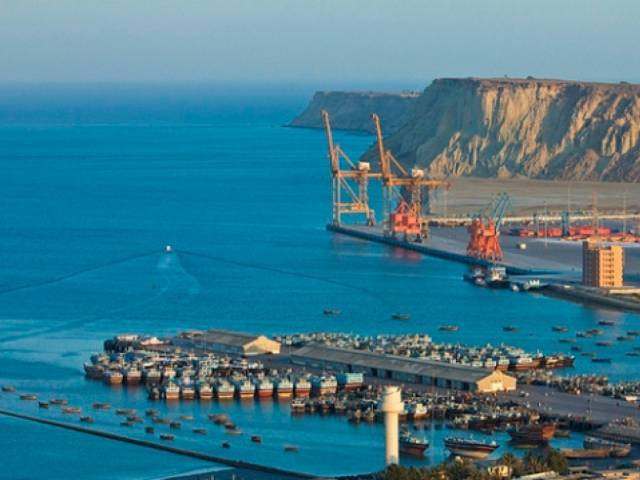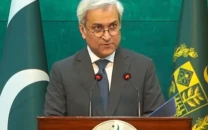Sheer size of CPEC portfolio appals IMF
Fund’s concerns stem from Pakistan’s weak repayment capacity

PHOTO: REUTERS
The IMF expressed these concerns during their meetings with the officials of the Ministry of Planning & Development and the Ministry of Finance.
Headed by its Washington-based Mission Chief Harald Finger, the delegation is in town to review Pakistan’s ability to repay its $6.1 billion outstanding loans to the fund.
Pakistan will start repaying some of the CPEC-related loans in next one-and-a-half years that according to Pakistani authorities will start ballooning after 2020, consuming its earnings equal to 0.4% of Gross Domestic Product.
In the initial year, the impact of the CPEC-related outflow is estimated at only 0.1% of GDP per annum by Pakistani authorities.
But according to the IMF estimates, those repayments will peak after seven years, reaching to $3.5 billion to $4.5 billion in a single year. The IMF estimates the CPEC-related outflow impact at 1.6% of GDP per annum by 2024.
CPEC toll income — myth and reality
The IMF delegation was appalled at the implications of the $60 billion portfolio of CPEC, according to the sources.
Its main concern was that Pakistan’s repayment capacity will remain weak, as the global lender does not see any major increase in exports in the near future due to a strong rupee against the US dollar.
Initially, the size of the CPEC portfolio was $46 billion that after inclusion of some new projects has grown to $60 billion.
However, the IMF was informed that the $8.2 billion Main Line-I (ML-I) project of Pakistan Railways was taking some time to get mature and its impact should not be included in the CPEC-related outflow obligations, said the sources.
During the seventh Joint Cooperation Committee meeting, no major breakthrough was achieved on signing further agreements of the ML-I project and the Karachi Circular Railways project worth $2 billion.
Similarly, there were few other projects that were also not picking up. The Pakistani authorities said the CPEC-related outflows would be roughly $2 billion from 2020 onwards, which the country can comfortably finance due to increase in exports.
The IMF was told that the real value of the CPEC projects was not more than $46 billion and so far projects worth only $23 billion have matured, said the sources.
CPEC at ease
“We have done detailed working about the CPEC-related outflows and do not see any liquidity crunch,” said Shoaib Siddiqui, Secretary of the Planning and Development while talking to The Express Tribune.
He agreed that Pakistan needs to build sufficient foreign currency reserves.
But the sources said the IMF team was of the view that there will still be pressure on balance of payments due to the CPEC-related outflows.
The IMF team said that due to an overvalued rupee, exports would not see major increase.
The team also said direct impacts on external balance are expected to be substantial due to CPEC-related outflows of loans repayments, profit repatriation and the cost of imported fuel for power plants being set up under CPEC.
The Pakistani team was of the view that the country has reprioritised its energy basket that will lessen the fuel import bill in the medium term.
In its latest report on Pakistan, issued in July, the IMF also underscored that over the longer term, Pakistan would need to manage increasing CPEC-related outflows.
The size of repatriation would also depend on the timing of project completion and the terms of the power purchase agreement.
The IMF also said due to increasing government and CPEC-related external repayment obligations, external financing needs are projected to increase to nearly 7.5% of GDP over the medium term, highlighting the need for macroeconomic and structural policies supporting competitiveness.
It said strong and sustained reform efforts aimed at raising exports by improving competitiveness and the business climate will be critical to maintaining long-term external sustainability.



















COMMENTS
Comments are moderated and generally will be posted if they are on-topic and not abusive.
For more information, please see our Comments FAQ